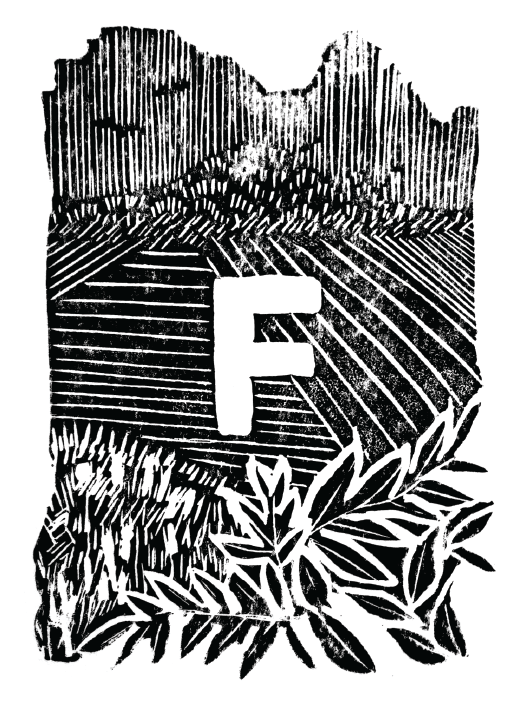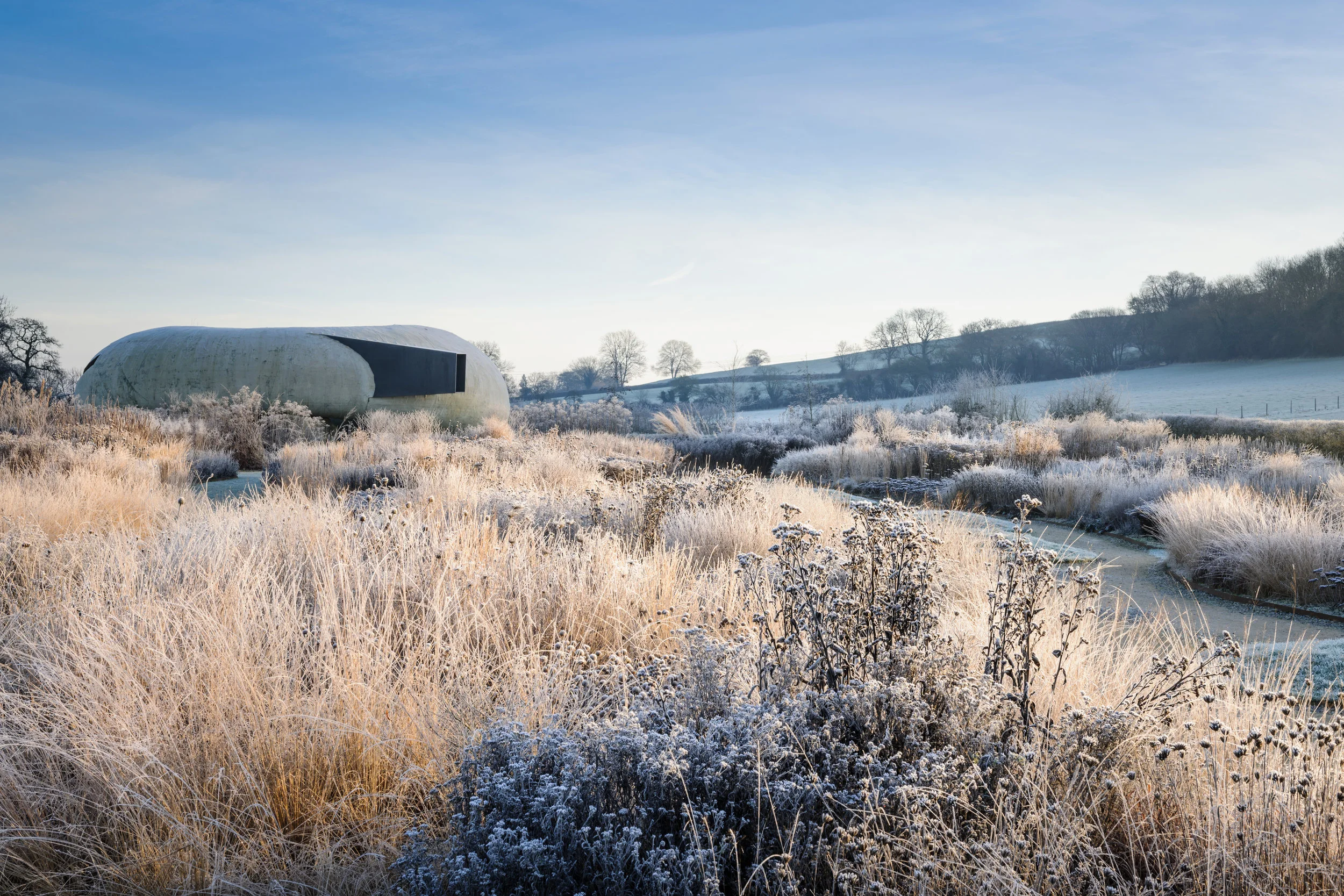Hauser & Wirth Somerset
In 2009, the founders of Hauser & Wirth purchased a derelict farm on the outskirts of Bruton. The site would become the leading gallery’s first rural outpost. Transformed over the years by sedulous restorations and the additions of a naturalistic 1.5 acre meadow, reassembled Serpentine pavilion, and site-specific, salvaged collage-bar — today, Hauser & Wirth Somerset radically unites global art and architecture with rural heritage, community, and landscape.
Interview with Alice Workman, Senior Director.
Hauser & Wirth Somerset’s perennial meadow by Dutch garden designer Piet Oudolf; restored farm buildings by Paris-based architect Luis Laplace. Photo: Jason Ingram.
Fields in Fields: What was the philosophy behind Hauser & Wirth’s first rural-based venue, and how was Bruton chosen?
Alice Workman: The gallery’s founders, Iwan & Manuela Wirth, moved to Somerset in 2007 and fell in love with the Bruton community and surrounding rural landscape. When they discovered the dilapidated buildings of Durslade Farm in 2009, they realised it was somewhere they could bring all of their interests together: art, architecture, landscape, conservation, garden, food, education, and community.
Importantly, it has also become a place for the artists represented by Hauser & Wirth to come and spend time creating an exhibition, or as part of our residency programme.*
Fields: Does the curation and exhibition design process differ in a rural setting from an urban setting? How does the unique site influence the gallery and artists who engage or reside within its spaces?
AW: The pace of life is slower in Somerset than some of Hauser & Wirth’s other locations and this is reflected in the length of the exhibitions at Durslade Farm, which typically last for 3 months. Our curation and exhibition design process is also influenced by the vast diversity of visitors in a rural setting. Every day we welcome friends and neighbours from Bruton, teachers and pupils from the local schools, art world and gallery colleagues, chefs and food lovers, gardeners, as well as artists from all over the world. We try to create exhibitions that will incite new ideas and experiences for each visitor.
The rural setting of Hauser & Wirth Somerset offers a unique dialogue between contemporary art and landscape, traditional and new architecture, the shifting personalities of its audiences, and the constant changes of the seasons. It all contributes to a rich experience.
* In an interview with The Guardian, Alice explained: "Pipilotti Rist came from Switzerland with her son who went to the local primary school in Bruton and they very much became part of the community. Then we had Guillermo Kuitca who stayed at the farm for five weeks back in the summer of 2013 with a very specific purpose to paint the dining room in the farm house as an installation piece. When he left he said he had more energy working here than he had for years. It's the kind of opportunity that has a different outcome and purpose for each artist and that's what makes the gallery interesting."
The Pavilion by Chilean architect Smiljan Radić, situated at the end of Oudolf Field. Photo: Jason Ingram.
Fields: Over the years, Hauser & Wirth Somerset has been restored and reformed by diverse, global architects and designers. What were the intentions behind each of the gallery’s spaces, indoor and outdoor, old and new?
AW: The design and restoration of Hauser & Wirth Somerset aimed to achieve a narrative or sense of journey through the existing buildings, new additions, and surrounding countryside. At the core of the pre-existing site of Durslade Farm were adjoining barns of varying shapes and sizes, forming a strong yet informal ensemble, and we have tried to preserve as many historic details as possible. The addition of two new wings has created a continuous internal space and an enclosed external courtyard.
Luis Laplace's starting point for the Farmhouse was the idea of using an artistic language versus an academic one; the result is ambiguous since art, architecture, and the history of the house merge. The brief for Piet Oudolf’s garden was absolute freedom — to give a high level of experience through all the seasons.
Fields: What role can art and design play in rural culture and economies, today and in the near future?
AW: As more and more people look for an escape from the urban sprawl, the appeal of finding that escape in a rural gallery or museum is increasing. Not only does a rural art institution help its local economy through jobs and tourism, it also encourages a love of culture through education, events, and community activities.
The bar at Roth Bar & Grill, created by artists Björn and Oddur Roth during their residency at Hauser & Wirth Somerset.
One of two shops at Hauser & Wirth Somerset.
Hauser & Wirth Somerset offers group tours, talks, and tailored events.
Durslade Farmhouse restored by Laplace, available for short-term stays.
Hauser & Wirth Somerset gallery opened in 2014 with a core belief in conservation, education, and sustainability. The multi-purpose arts centre is open to the public six days per week and offers special events including talks, seminars, workshops, screenings, and learning programmes for local schools and families. On-site are also two shops, a dedicated learning room, and a restaurant with working farm.
In September 2018, the gallery launched Make Hauser & Wirth Somerset on Bruton High Street, in collaboration with Jacqueline Moore.
The farm’s original six-bedroom Durslade Farmhouse has also been restored by Laplace, and is available for short-term stays.
Hauser & Wirth galleries are located in Zurich, London, New York, Los Angeles, Hong Kong, Somerset, Gstaad, and St. Moritz.
Published on 13 May 2019. Cover photograph by Jason Ingram; all images courtesy of Hauser & Wirth Somerset. ■ Hauser & Wirth Somerset, Durslade Farm, Dropping Lane, Bruton, Somerset BA10 0NL. www.hauserwirth.com






